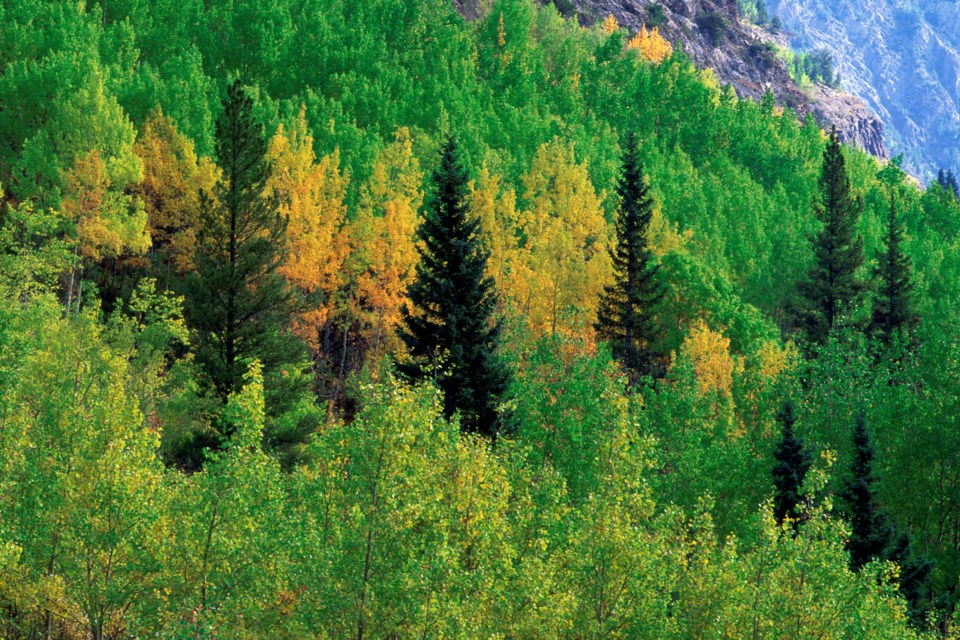If there’s one thing this past fire season has told us, it’s that we need to get serious about reducing the fire risk around Prince George.
I want to do a couple pieces on this complex subject and to start I want to stress the pretty straightforward idea of prioritizing broadleaf over conifer, aspen over pine in particular.
It’s an undeniable fact the resinous pitch-soaked pine and spruce will light up much more swiftly than a water-logged aspen should a fire sweep into our city. The burn rates are different by orders of magnitude.
Yet when I look out at the fairways at the golf and curling club, I see a lot of pine and spruce trees.
When I travel our boulevards, Ospika, Tyner, and Foothills to name a few, I see pine plantation landscape features.
We have a habit of showcasing conifer tree farms as model forests. Up at Forests for the World, large areas of fire-resistant, moose-feeding broadleaf forests were levelled in the 1980s and converted to conifer plantations. Even UNBC’s forestry club took out some beautiful birch and aspen forest behind the university to grow a practice mini-plantation of fire-prone conifer for Christmas trees.
More detrimentally, hundreds of hectares of broadleaf forests on regenerating cutblocks between the Nechako River and the city, probably the most likely path a fire will take to enter our city, were either sprayed with glyphosate or manually brushed to grow conifer. BC Timber Sales even aerially sprayed cutblocks inside city limits back in 2009 and 2010. We spent hundreds of thousands of public dollars doing this, and we did almost all of this after a 2009 city wildfire report told us not to.
The war on broadleaf in forestry rages around our city. Canfor, BC Timber Sales, and other companies continue to suppress huge amounts of broadleaf in our surrounding forests, manually and chemically.
The goal in forestry is flammable conifer, not fire-resistant deciduous broadleaf.
We know it’s all about money, but I suggest we are losing sight of a few price tags when we trip along in our conifer-addicted haze: the risk of much more fire.
Of course it’s worth repeating aspen can burn too, especially before leaf-out, or mixed with even a small component of conifer (pure aspen is best).
After a year like this year, we need to immediately prioritize pure broadleaf.
Developers need to plant broadleaf, not conifer, when they reforest in city limits.
When we thin “brush” in city parks, we need to remove the pine and spruce, not the aspen and birch.
Residents should be encouraged to keep their broadleaf, not the conifer.
And perhaps more critically, we need to pressure provincial forestry officials to ask themselves what they care about: growing fire-trap plantation forests to threaten our communities or diverse forests with lots of aspen to dampen those flames and feed those moose and beaver?
James Steidle is a Prince George writer.



